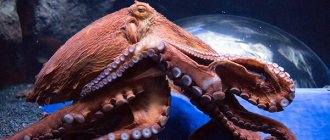Many scientists are inclined to believe that dolphins are intelligent creatures that have been developing in parallel with humanity since the appearance of life on the planet. They have their own language and hierarchy, their brain activity is strikingly different from that of all other animals and fish and cannot be fully studied. Experiments conducted with the participation of these creatures usually baffle researchers, since they cannot form a definite opinion about the level of intelligence of dolphins. Of course, they are very smart and hide secrets that humanity will study for a long time. That is why interesting facts about dolphins never cease to amaze not only children, but also adults.
Who are dolphins?
First of all, it must be said that dolphins are not fish, despite the fact that they live in water. These creatures are mammals and viviparous, just like all inhabitants of the animal world. In this case, the female gives birth to only one baby, and not many. And the mother bears her child from ten to eighteen months. The name of the animal, which dates back to the ancient Greek language, is translated as “newborn baby.” What this is connected with is now difficult to determine. Perhaps dolphins received this name for their piercing cry, similar to the cry of a child, or perhaps for their resemblance to a human fetus in the womb.
The most amazing facts about dolphins prove their close proximity to humans. These animals swim very quickly, so they often compete in speed with ships and have fun by jumping out of the water and seeming to smile at people looking at them. There are known facts of human rescue by dolphins.
Pregnancy lasts 10-18 months
Dolphins live about 20-30 years, but their gestation period is longer than that of humans. They bear babies for 10-18 months . They can be born small, up to 50-60 cm, or larger. When a dolphin is about to give birth, it begins to move, arching its tail and back. Other dolphins surround her in a tight ring, trying to help and protect her.
As soon as the baby is born, he is pushed upward so that his lungs expand and he can take in air. He recognizes his mother by her voice, because... She starts whistling immediately after giving birth, 10 times more often than usual.
In the first few months, an adult dolphin does not leave its baby; if it is hungry, the baby begins to cry, just like in humans. All mammal babies sleep a lot in the first months after birth. But not dolphins.
At first, the little dolphin does not know what sleep is at all; he begins to sleep only 2 months after birth. For the first year of his life, the baby lives next to his mother, who not only feeds him, but also educates him and punishes him if he does not obey. Then the mother begins to teach him how to get food and communicate. The dolphin grows in a female herd, while the males live separately. One mother can have 7-8 cubs, or only 2-3.
Oceanic beauty - bottlenose dolphin
The bottlenose dolphin, interesting facts about which never cease to amaze the world, is the kindest and most sympathetic creature on the planet. They live in the warm waters of the world's oceans. The bottlenose dolphin's diet consists of fish, squid and small inhabitants of the ocean depths.
The bottlenose dolphin, interesting facts about which history knows, is a very compassionate creature. An indicative case occurred in New Zealand in 2004. A hundred meters from the shore, four rescuers were attacked by a white shark. A school of bottlenose dolphins protected people for forty minutes from a predator that sensed its prey. There is no explanation for this fact of kindness and compassion on the part of animals.
Interesting facts about dolphins are varied. One of them says that bottlenose dolphins have a brain volume of one thousand five hundred milligrams. According to scientists' research, each dolphin has its own name, which its relatives call it. All of them produce peculiar sounds that are difficult for the human ear to catch, but in its environment one individual differs from another precisely in its peculiar timbre and manner of communication.
Incredible regeneration speed
Amazing dolphins will not bleed even after meeting a shark. In the event of a wound, the tissue begins to heal so quickly that in just a few weeks there will be no marks or scars left on it. Interestingly, the behavior of an injured dolphin does not differ from its usual behavior. This suggests that the dolphins' nervous system blocks pain sensations.
Coastal white-beaked dolphin
White-faced dolphins are inhabitants of temperate waters. They mainly live in the coastal zone and feed on bottom-dwelling fish. Most often they are found off the coast of Norway, where fishing for dolphins of this species is open.
The white-faced dolphin is unique; interesting facts about it are very common. The motives of this species of individuals that force the animals to wash ashore are unclear. Despite the fact that they can breathe oxygen, water is vital for them, since the surface of the skin must not be allowed to dry out. Scientists hypothesize that white-beaked dolphins wash ashore due to infections and diseases that plague them. But this, like everything related to dolphins, requires deep and detailed research.
Dolphin and man
Interesting facts about dolphins say that they are smarter than any person on the planet. As already mentioned, the brain of these creatures can reach a weight of 1700 mg, while in humans it is 1400 mg. In addition, compared to humans, dolphins have significantly more convolutions in the cerebral cortex. Interesting facts (for children) about these creatures help develop in the younger generation a desire to learn more about our smaller brothers.
Dolphins have a “lexicon” of fourteen thousand signals, which are pronounced with different intonations and unique voices. Animal psychologists claim that dolphins have quite developed self-awareness and social consciousness. Since they live in a collective, its problems are not alien to each individual. If a sick or weak dolphin appears in a family, then all its relatives help it and push it to the surface, giving it the opportunity to take a breath of fresh air. Some people should learn compassion from these noble animals.
Dolphin tongue
The category “The most interesting facts about dolphins” includes their ability to communicate with each other and detect prey. Researchers have discovered that these creatures have their own sounds for different life situations, and they are divided into sonar and communicative. Sonar signals are used to detect prey, and communication signals are used to communicate within the family.
Ordinary human hearing is unable to catch the dolphin call. People perceive sounds up to twenty kilohertz, and dolphins emit signals at a frequency of up to two hundred kilohertz.
Scientists have found that in the speech of animals there are more than one hundred and eighty different whistles. Dolphin sounds form syllables, words and even phrases. And representatives from different regions each whistle in their own dialect.
American scientists have created a device with which they are trying to recognize the meaning of dolphin signals.
Not long ago it was found that the ultrasound emitted by dolphins has a beneficial effect on human health and even helps in the treatment of certain diseases.
All the most interesting things about dolphins
It's safe to say that dolphins are the most unusual creatures on the planet. Here are 10 interesting facts about dolphins.
- The ancient Greeks revered the dolphin as a deity and gave it the name “sacred fish.” The statue of Apollo at Delphi bore the image of this animal.
- The Romans placed dolphin figurines in the hands of the dead during burial. According to legend, they were supposed to accompany a person to the afterlife.
- Dolphin figurines were found in the Jordan desert. It is surprising that this country is located far from the habitat of animals.
- Dolphins have teeth, but do not use them to chew because their jaws are not overgrown with muscles.
- These animals understand human speech if they communicate directly with people. They can remember up to sixty words.
- If a dolphin has one tablespoon of water in its lungs, it will die. In this case, a land dweller, a person, dies from two tablespoons of water.
- Female dolphins help each other give birth to their offspring. All other relatives provide protection at this time.
- Dolphins do not smell, but they do have taste buds, so they may be offended by a gift of chili peppers and grateful for candy.
- A dolphin weighing one hundred and twenty kilograms needs to eat thirty-three kilograms of fish a day, while the animals do not gain weight or become obese.
- Dolphins help fishermen fish. They tell you when there are a lot of fish in the nets and it’s time to pull them out.
All interesting facts about dolphins are associated with their unique abilities and talents, as well as with the “human” characteristics of the species.
LiveInternetLiveInternet
Dolphins are deservedly considered the most amazing creatures in the whole world! In the soul of any person, even someone who is far from receptive, they are capable of causing a storm of emotions. Dolphins are intelligent, friendly and sensitive creatures.
Who are dolphins? We all know that dolphins are small whales. Like other cetaceans, dolphins breathe air rather than through gills. They never leave the sea; their young are born here. Their mother feeds them with milk, so dolphins are classified as mammals. They are warm-blooded. They have sharp teeth and their head ends in a mouth like a bird's beak. The main food of dolphins is fish, shellfish and small sea animals. Regular dolphins are about 1.6 meters long. They have a large mouth with 80-100 teeth. They are black or gray on top, and their belly is white with black fins. Porpoises belong to the same family as dolphins. The harbor porpoise, which lives at all latitudes from Greenland to North Africa, is one of the most peaceful dolphins. In addition to fish, she eats crustaceans and even algae. Therefore, she tries to stay in shallow water, where there is a lot of food for her.
Dolphin sense of smell. Many important secrets of dolphins have not yet been fully studied and explained by researchers. Researchers made many mistakes on the way to studying living beings, unwittingly comparing the object of their research with a person. Such mistakes were once made when studying the olfactory apparatus of dolphins. Considering the sense of smell of dolphins with an eye to the olfactory mechanisms inherent in other mammals, and, in particular, humans, a hasty and not entirely correct conclusion was made that the sense of smell does not play a significant role in the life of dolphins. For a long time it was believed that short-term diving of dolphins can hardly be sufficient for analyzing odors using the nasal passage, which during diving and being under water is generally closed and does not allow the dolphin to sense odors in the water. Based on these statements, erroneous conclusions were drawn about the underdevelopment of the olfactory organs in dolphins, and these conclusions are currently being revised. Observations of dolphins living both in aquariums and in the natural environment have shown that dolphins not only leave odorous traces of their presence in the water, but also instantly react to traces left by other inhabitants of the water. The mechanisms and receptors responsible for the perception of odorant signals require serious study, and research in this area can radically change our understanding of the life of sea inhabitants.
Legends about dolphins. There are many myths and legends about dolphins. They tell how these animals helped sailors in trouble and rescued those who were drowning. I want to tell you one of the legends about the eternally young god Dionysus, who in Ancient Greece was considered the god of entertainment and holidays. One day, sea robbers managed to capture him. However, they did not know that they had captured not an ordinary young man, but a god. In their plans they already saw a good ransom for the captive who they were going to sell into slavery. However, when the robbers tried to put Dionysus in chains, they failed; the shackles themselves fell off his hands and feet. The pirates were at a loss, but when they saw that wine was flowing across the deck out of nowhere, and the masts of their ship began to be covered with ivy and vines, they realized that in front of them was the god Dionysus himself. From the horror of what they had done, the robbers rushed in all directions into the open sea to escape the wrath of God. However, Dionysus decided that they did not deserve to die in the depths of the sea and did not let them drown. Instead, he turned them into dolphins. Another legend tells us that Apollo, another god of Ancient Greece, could himself turn into a dolphin. One day he saved a wandering ship of Cretan sailors and helped him get to the shore, accompanying the ship and showing him the right path. Now, in the place where the dolphin-god of sailors led, a city called Delphi is founded. Once upon a time, by the way, the famous temple of Apollo was located in Delphi. It is interesting that some tribes and peoples have legends associated with dolphins, which they believe in to this day. For example, in one African tribe they firmly believe that pink dolphins living in the waters of the Amazon River are capable of turning into young men of unprecedented beauty on a full moon who seduce young and inexperienced girls. Another African tribe believes that the soul of a drowned man is reborn in a dolphin, which at some point can also turn into a young man.
"Conversation" of dolphins. Marine mammals are far from silent. It has now turned out that all whales make sounds, but dolphins turned out to be the most “talkative”. They use sound signals of a wide variety of frequencies. The ultrasounds they produce serve mainly for echolocation. In the language of dolphins, whistles are very important, which are used in different situations, expressing a whole range of feelings. They are very diverse in their characteristics - each dolphin has its own manner of “speech”. Therefore, dolphins in a group recognize each other by the nature of their whistle. In addition, dolphins have sounds that we hear without special devices. They are also quite varied. This includes barking, squealing, chirping, as well as howling, clicking and grunting. The biological meaning of many signals has not yet been clarified, but some sounds have been deciphered. For example, flapping jaws is a signal of threat, a signal such as a loud squeal is severe pain, yapping is an expectation of food, and a sound such as barking is a “conversation” between males and females during the mating season. Dolphins are good at imitating foreign sounds, and the famous dolphin Elvar could even pronounce some human words. Based on work with dolphins, some scientists have concluded that they can be taught meaningful human speech.
Is dialogue with dolphins possible? Among all the animals inhabiting the globe, we consider only humans to be intelligent creatures. But there are animals about which we can also say that they are endowed with intelligence. These are dolphins. Their brains are larger and richer in convolutions than humans. The intelligence of these animals is evidenced by numerous facts of dolphins saving people. And it turns out that dolphins possess “language,” one of the evidence of the presence of intelligence. With its help, they transmit a wide variety of information to each other. If people learned to understand this “language,” perhaps they would be able to unravel many of the mysteries of the ocean. Domestic and foreign scientists have discovered many patterns in the “language” of dolphins. They found that when communicating with each other, marine “intellectuals” use several hundred diverse and complex sound signals. Interestingly, in normal conversation we use the same number of words. Experts analyzed the “language” of dolphins and found that it is structured in approximately the same way as human speech. Unfortunately, so far scientists’ attempts to decipher the “language” of dolphins have ended in failure. But if we can't exchange thoughts, why don't we try to communicate on the level of feelings?
Sea acrobats. Representatives of the dolphin family are among the most sociable and friendly members of the animal kingdom. In total, 40 species of dolphin-like animals live in the World Ocean. The two most famous dolphins are the bottlenose dolphin and the common dolphin, or common dolphin. Bottlenose dolphins are especially numerous off the eastern coast of the United States, as well as in the Mediterranean and Black Seas. Common dolphins live in temperate and warm waters of the Pacific Ocean. The length of the bottlenose dolphin is from two to three meters. Usually the color is dark brown on top, turning white on the belly. Apparently, the dolphins of ancient myths are bottlenose dolphins. Nowadays, it is the bottlenose dolphin that is most often used for experiments than other species. During the Vietnam War, the Americans used specially trained bottlenose dolphins to mine bays and piers. The common dolphin is smaller in size than the bottlenose dolphin. Its length is about 2.5 meters, its sides are covered with brown, yellow and white stripes. The dark stripe bordering the eyes and disappearing on the beak gives the white sided a very cute appearance. Whitetails love to accompany ships. They jump out of the water or swim, almost standing on the tail fin and peer into the distance. Seeing the ship, they surround it from all sides and, as if welcoming the sailors, begin to jump high out of the water. Squirrels can swim tirelessly for tens of kilometers and perform various acrobatic stunts for hours.
Interesting facts from the life of dolphins. Of course, it’s no secret that dolphins are one of the most mysterious species of animals on our Earth. Their intelligence is considered so high that they can be compared to humans. Dolphins always help each other and never abandon their fellow creatures in trouble. In this way they are very similar to people; they are characterized by mutual assistance and self-sacrifice. Dolphins' hearing is unique; it operates on the principle of an echolocator. They can determine the distance of an object, its size, shape by reflected sounds. Therefore, in the water space they navigate more through hearing than through vision. They can eat up to 30 kilograms of fish per day. This is very important because they are warm-blooded animals and they need to maintain a constant body temperature in any water, even very cold. And their body temperature is quite high. It is also interesting how dolphins sleep. It is easy to drown in the sea or become a victim of other predators. And in this regard, the sleep of dolphins is not similar to the sleep of ordinary animals. During sleep, one hemisphere of the dolphin rests, and the second is awake, that is, vigilant. Therefore, the dolphin is always in control of the situation and at the same time resting. The life of dolphins is not very long, only about 30 years, in more rare cases - 40-45. Replenishment of the dolphin family occurs approximately every two years. Dolphins can be compared to penguins in that they are very touching parents who protect, teach and care for their young for about five years.
The uniqueness of dolphins. Dolphins are mysterious and very intelligent animals. They have a unique hearing of two types. They see equally well in water and in air - this ability has also not yet been solved. Dolphins are very fast animals - they reach speeds of up to 55 kilometers per hour. They are exceptionally intelligent. They are much easier to train than dogs. Two or three shows are enough for them. Dolphins carefully take fish from a plate, catch it in flight and take it from the trainer’s hands, jumping to a height of more than four meters. They serve things thrown into the water, jump through a hoop engulfed in flames, play basketball and water polo, throwing balls with great accuracy. They perfectly imitate the human voice, pronouncing entire phrases. The ability to imitate is much higher in dolphins than in parrots. In ancient legends of different nations, the ability of dolphins to save drowning people was praised. There are several real cases known. In the press, these real cases are explained by the “humanity” and friendliness of dolphins towards humans. In fact, these actions are most likely based on an inherited reaction. Because dolphins are social creatures, they live in families. Typically, the family is led by a female dolphin, and this is beneficial as the young dolphins grow up. And during the trip, several families unite to create a higher level of protection.
Dolphins' ability to heal wounds. Nature hides great wonders from us. Just look at the amazing abilities of dolphins, which were discovered by Michael Zaslow , a researcher at Georgetown Medical Center. Recently, in the Journal of Investigative Dermatology, the scientist published his article in which he talked about documented cases of serious injuries to dolphins, which they most likely received in fights with sharks. The deep bites, which could be compared to a basketball, healed very quickly, literally in weeks. At the same time, they almost did not bring any pain to the dolphins, and did not leave scars after healing. Some surprising features work together to enhance the dolphins' recovery abilities. The first of these is the ability not to experience bleeding. Zaslow said marine mammals have the ability to trigger a mechanism that stops blood flow to parts of the body. Secondly, during the healing process of the wounds, the dolphin does not show any signs of infection. Researchers have discovered that the skin and fat layer of animals contain antibacterial compounds that can stop infection in open wounds. “Within a few weeks, dolphins can replace all of the lost tissue, even the size of two footballs, without any defects or scars on the body,” says Zaslow. They have the ability to harness the regenerative abilities of specialized stem cells, such as those found in many amphibians, which can grow new legs.
Thus, science knows that there is a unique animal in the world that has developed and continues to develop in the waters of the ocean without arms and legs. This animal is able to swim much faster than us, and it has an intelligence that is likely equal in complexity to human emotional and social abilities. In addition, this animal has healing powers to restore its own body. This is a dolphin.










